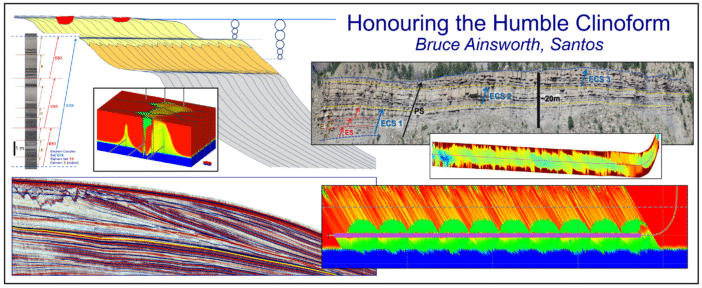
- This event has passed.
PESA WA Host for Phil Ringrose SEG Distinguished Instructor Short Course on Storage of Carbon Dioxide in Saline Aquifers
PESA WA Host for Phil Ringrose SEG Distinguished Instructor Short Course on Storage of Carbon Dioxide in Saline Aquifers
Monday 12th February, 2024 @9am to 5pm (Perth/Australia Time)
Cost: $575 USD
PESA WA will be hosting the SEG Distinguished Instructor Short Course (DISC) on “Storage of Carbon Dioxide in Saline Aquifers – Building Confidence by Forecasting and Monitoring” presented by Phil Ringrose. This one-day short course will be held in Perth on Monday, February 12th, 2024 (at Parmelia Hilton, 14 Mill Street).
All those interested in understanding the state of play in saline aquifer CO2 storage technology will benefit from this course. The primary target audience is multi-disciplinary subsurface teams, and the content covers relevant aspects of geoscience, geophysics, and reservoir engineering.
PESA members can register for the course through the SEG Website and use a coupon code to obtain the special SEG course rate of $575 USD (see info below).
Register at the SEG DISC site page for Perth.
Use PESA Coupon Code: ASEGPESAMEMBER
Categories: PESA WA – SHORT COURSE
Course Description
Interest in carbon capture and storage (CCS) is growing rapidly as a crucial part of global efforts to reduce greenhouse gas emissions into the atmosphere. To support this growth in capture technology, we need an acceleration in new CO2 storage project developments. In this course, we review the science and technology underpinning CO2 storage in deep saline aquifer formations using insights from several industrial-scale projects. We analyze the main factors that limit storage capacity — constraints governed by flow dynamics, injectivity, pressure development, and geomechanics. Then, this physical basis provides a framework for determining how to optimize monitoring methods. Using the latest portfolio of geophysical methods for smart and cost-effective monitoring at the surface and downhole (including conventional seismic acquisition, passive seismic listening, and fibre-optic sensing), we discuss how short- and long-term storage assurance can be demonstrated with high levels of confidence.
Next, we address the question of what is needed to achieve climate-significant scales of CCS deployment. Although technically achievable, the current socio-economic framing often makes storage project execution difficult in practice. By building technical confidence in project execution, we may be able to ‘turn the dial’ and realize the gigatonne levels of storage needed over the coming decades.
Questions answered in this course:
- What are the main processes involved in the geologic storage of CO2?
- How should we estimate CO2 storage capacity?
- What is the physical basis for estimates of storage efficiency?
- What are the constraints to storage? When does injectivity matter? Are pressure limits the main issue?
- What are the geomechanical limits? Should we expect significant levels of induced seismicity?
- How can we optimize monitoring methods to make them smart and cost-effective?
- How reliable is time-lapse seismic monitoring for detecting small CO2 volumes in the subsurface?
- How can fibre-optic sensing (DAS) reduce the costs and footprints of monitoring schemes?
- How can we apply advanced analysis (e.g., FWI) for monitoring using sparse acquisitions?
- How can we assure long-term containment? What about leakage risks?
- And finally, is the required global scale-up in CCS deployment achievable?
Goals
The goal of this course is to review the main concepts involved in the engineered storage of CO2 in saline aquifer formations, dispelling some common misunderstandings along the way. After explaining the main trapping mechanisms, we critically assess methods for estimating storage capacity and evaluate the key constraints for achieving the storage volumes needed over the project’s timeframe. The course material has a strong focus on geophysical monitoring methods and data sets, which are key to the stated objective of building confidence in the technology and assuring long-term storage integrity.
Who Should Attend
All those interested in understanding the state of play in saline aquifer CO2 storage technology will benefit from this course. The primary target audience is multi-disciplinary subsurface teams, and the content covers relevant aspects of geoscience, geophysics, and reservoir engineering. Managers, team leaders, and business developers also should find most of the material accessible. For subsurface specialists, the focus is on learning across disciplines (e.g., how might flow analysis affect site selection choices or how ‘geological details’ impact the engineering assessment). With a strong focus on advanced geophysical monitoring (especially time-lapse seismic), geophysicists will find the course helpful for designing and interpreting seismic monitoring data sets. This course does not require advanced mathematical knowledge, although several governing equations are introduced and used. The main objective is to provide an intuitive understanding of the geoscience, physics, and geophysics of CO2 storage in saline aquifers. Familiarity with integrated 3D subsurface modelling and seismic interpretation tools will be an advantage but is not essential.


